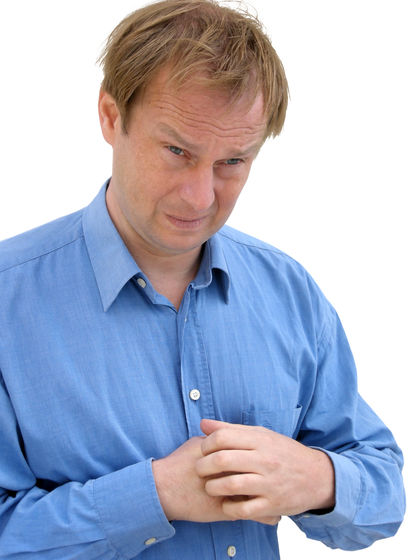Food Poisoning

Food poisoning results from eating foods that contain bacteria or their toxic byproducts. This can happen when foods have not been properly stored or prepared. Food poisoning also can result from eating poisonous plants or animals.
KEYWORDS
for searching the Internet and other reference sources
Bacterial infections
Botulism
Digestion
E. coli
Gostroenteritis
Salmonella
Staphylococcus
Robin's Story
Robin and her friends squeezed every pleasure they could into the early days of September, milking summer vacation for all it was worth. The make-your-own-sundae party at Robin's was the best time they had all summer. But within a day or two of the party, Robin and her friends all were suffering from diarrhea, fever, stomach cramps, and had vomited more times than they had ever imagined possible. Why? Robin and her friends were among the nearly quarter million Americans who became ill after eating ice cream that fall. The culprit? Salmonella enteritidis bacteria. Unseen, odorless, and tasteless, the microscopic creatures poisoned the ice cream ingredients on the truck ride to the ice cream factory. The reason? The truck had not been cleaned from its previous load: unpasteurized raw eggs, a prime breeding ground for Salmonella.
What Is Food Poisoning?
Food poisoning is caused by eating harmful bacteria or the poisons they produce. These bacteria live in soil, raw meat, raw milk products, pets, bugs, rodents, and on unwashed hands and food-related equipment. Food becomes contaminated when food handling, preparation, or equipment is unsanitary. The most common sources are unrefrigerated, perishable * food; raw or undercooked foods; or preserved foods that were not cooked at high enough temperatures.
Although the food in the United States is among the most clean and safe in the world, outbreaks of food poisoning kill about 9,000 people a year and cause between 6.5 and 33 million illnesses each year. Food poisoning is not contagious like chickenpox, but an infected person can pass along the infection by hand-to-hand contact (for example, serving food).
How Does It Happen?
Food poisoning occurs when bacteria or their toxic products are present in the foods we eat. They usually cause inflammation in the intestines, and the body does everything it can to get rid of them.
* perishable means able to spoil or decay, as in perishable foods.
Avoiding Food Poisoning
- Bacteria need time to grow, so do not eat perishable foods that have been out of the refrigerator for more than 2 hours.
- Do not eat raw or undercooked eggs, poultry or meat.
- Meat and poultry should be well cooked, not pink in the middle.
- Do not eat raw or unpasteurized dairy products.
- Wash fruits and vegetables before eating.
- Wash all plates, cutting boards, counters, and utensils that have come into contact with raw meats or poultry thoroughly before using them for something else.
- Wash hands thoroughly between handling raw meat and other items.
- Wash hands thoroughly after using the bathroom.
- Wash hands thoroughly after having any contact with animals and reptiles (which sometimes carry bacteria on their skin).
- Make sure the refrigerator temperature is kept between 34 and 40 degrees Fahrenheit.
80 Years Ago:
A Kansas Cannery
Poisoning that results from eating food contaminated by Clostridium botulinum bacteria is called "botulism." The word "botulism" is derived from the Latin word "botulus," which means sausage.
Originally, scientists believed that the botulinum toxin could only be produced in the presence of animal protein, as found in sausage. In 1919, however, a botulism outbreak was traced to canned vegetables from a commercial cannery in Kansas. That same year, another botulism scare involved canned olives. Both incidents prompted stricter regulatory control of food processing technology.
How Do People Know If They Have Food Poisoning?
People with mild cases of food poisoning may have diarrhea, fever, vomiting, and stomach pains. The first signs of food poisoning can appear as early as 1 hour after eating or up to 3 days later. These symptoms may occur in others who ate the same food.
Diagnosis
Doctors diagnose food poisoning by asking about symptoms; conducting laboratory "stool cultures," which test for the presence of specific bacteria; and having food samples analyzed. Outbreaks may be investigated by the local or state department of health.
How Is Food Poisoning Treated?
Food poisoning lasts for 1 to 7 days and usually does not require hospitalization. Hospitalization is necessary for serious cases of certain types of food poisoning or when the diarrhea or vomiting has caused dehydration * . To treat dehydration, the doctor may give a person fluids intravenously, that is, directly into the veins. People also might be hospitalized if the infection spreads from the intestines to the rest of body. In some cases, doctors will give them antibiotics to fight the infection.
Prevention
Following three basic guidelines will help prevent food poisoning:
- Do not eat perishable foods that have been at room temperature for more than 2 hours.
- Wash hands and utensils before and after handling any food, after using the bathroom and after handling raw meat, poultry, or eggs.
- Cook food thoroughly, and do not eat marinade from raw meat or poultry until it has been thoroughly boiled.
But even when individuals keep themselves and their food clean, contamination may have happened long before it comes into people's kitchens, as with Robin's ice cream. Food processors, growers, and distributors also need to take steps to keep food safe (for example, clean processing plants and safe and sanitary storage of food). The U.S. Department of Agriculture, the Food and Drug Administration, and local state and city Departments of Health have strict rules for these businesses that are carefully enforced.

* dehydration (dee-hy-DRAY-shun) is loss of fluid from the body.
See also
Bacterial Infections
Botulism
Resource
The U.S. Food and Drug Administration publishes a
Bad Bug Book
with fact sheets about many different foodborne toxins.
http://vm.cfan.fda.gov/~mow/intro.html
Comment about this article, ask questions, or add new information about this topic: